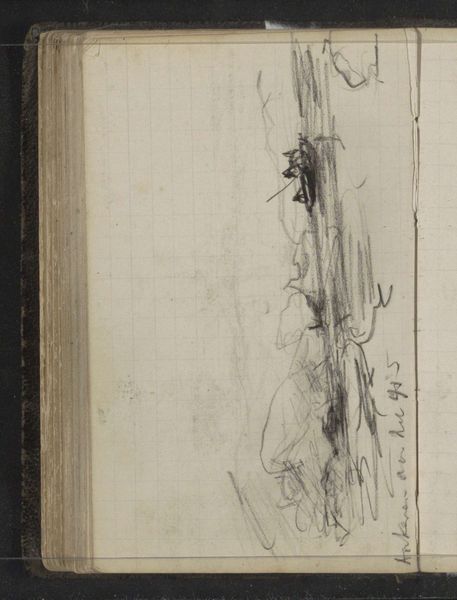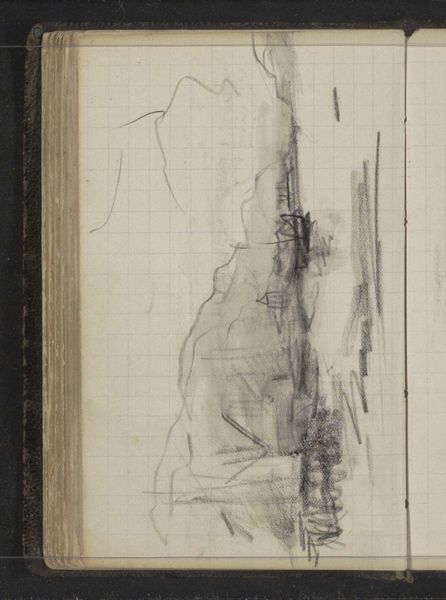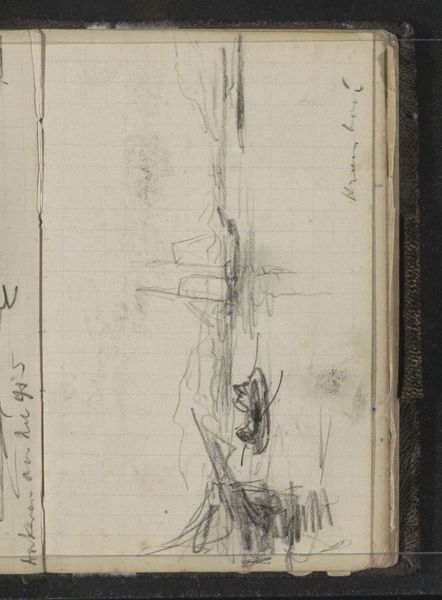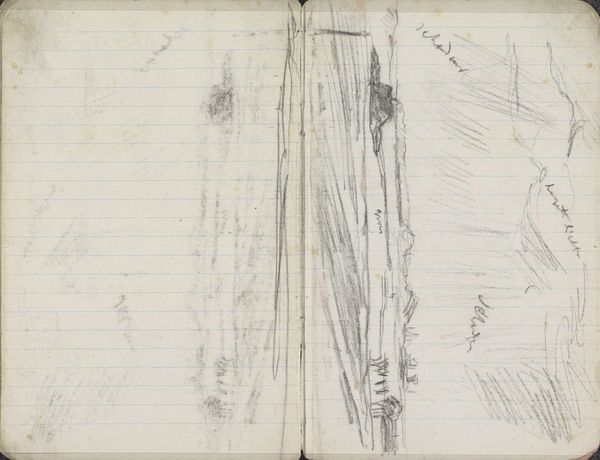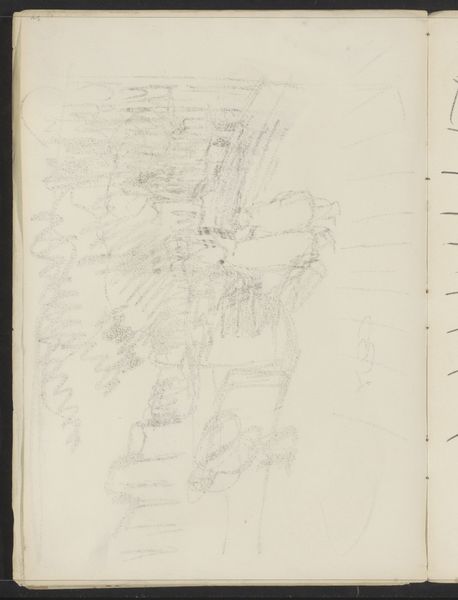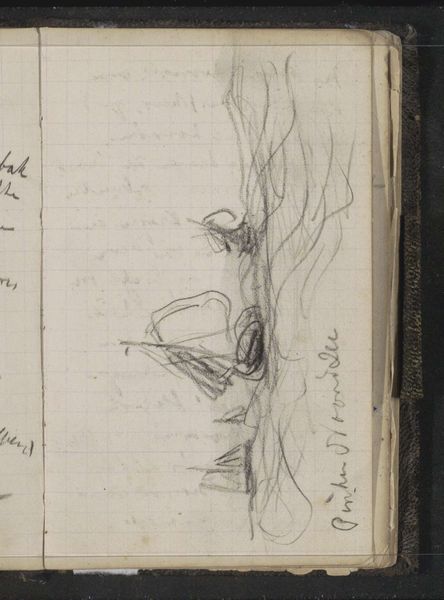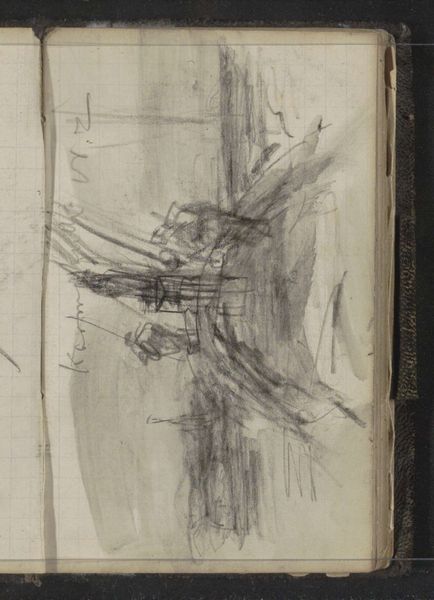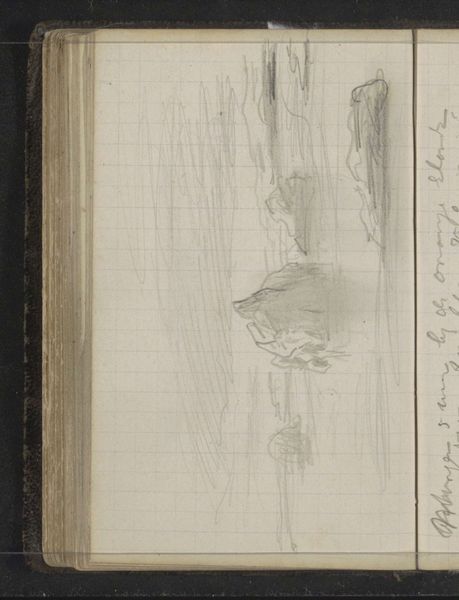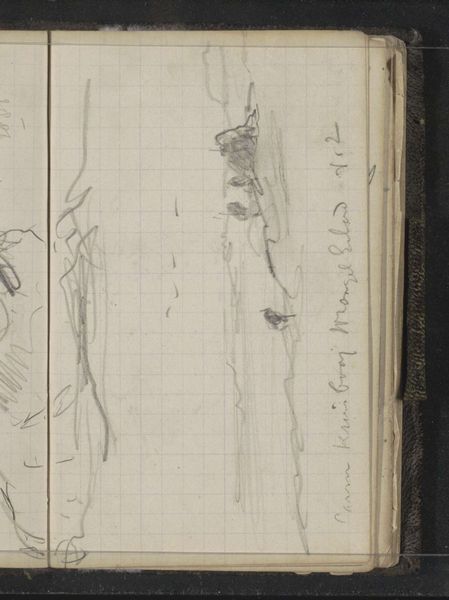
drawing, pencil, graphite
#
drawing
#
landscape
#
coloured pencil
#
pencil
#
graphite
Copyright: Rijks Museum: Open Domain
Curator: At first glance, it looks more like a cryptic journal entry than a fully realized piece. Editor: Let me set the scene a bit. We are looking at "Schoener Willem Barentsz en een roeiboot voor de kust" a drawing by Louis Apol, likely dating to the 1880s. It's a fascinating work using graphite, pencil and colored pencil on paper, currently held at the Rijksmuseum. What is that immediate impression based on? Curator: It is those raw lines, the graphite smudges; it feels like a personal, perhaps even rushed, notation. The lack of detail somehow heightens the feeling of a cold, stark environment. The scribbles above make me think of clouds but it feels foreboding. Editor: The image depicts the schooner Willem Barentsz, and indeed, a small rowing boat off the coast. Barentsz, of course, famously searched for the Northeast Passage, leading expeditions to the Arctic. The image places him humbly at shore. Given Apol's documented interest in wintry landscapes, do you feel the mood reflects the dangers of that landscape? Curator: Definitely. Beyond just a depiction of a ship, the sketchy rendering of that small boat, almost swallowed by the imagined vastness of the scene, gives it a psychological depth. Ships often carry associations of exploration and conquest, but here it looks like a small challenge in a dangerous world. It is rendered like the most minimal form of a symbolic challenge. Editor: Apol was active in a period where the romantic interpretation of landscape was losing traction against burgeoning modern artistic styles. Given that historical context, can this drawing be seen as more than just a traditional landscape study? Perhaps some socio-political commentary? Curator: That's a compelling question. The inherent drama of such expeditions and the potential nationalistic readings seem absent. By stripping it down, the artist removes all triumphant symbolism. What's left is an elemental representation of humanity and nature that resonates beyond its immediate context. Editor: So, despite its understated nature, the drawing encapsulates both a historical event and a more universal theme of human ambition meeting the forces of nature. Curator: Exactly. The visual economy of it is deeply powerful. Editor: It really gives one something to think about the relationship between initial perception and deeper contextual understanding. Curator: Absolutely; a compelling conversation.
Comments
No comments
Be the first to comment and join the conversation on the ultimate creative platform.
